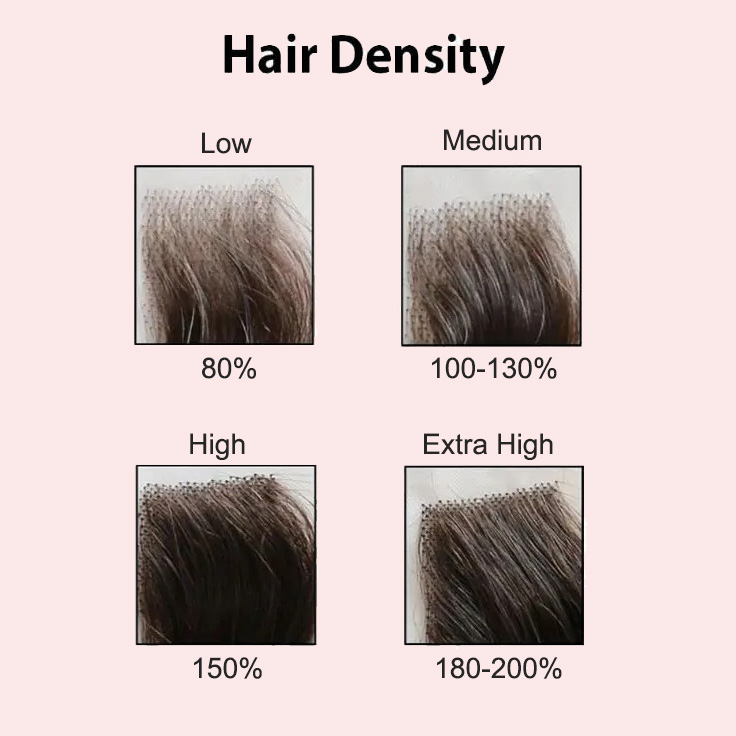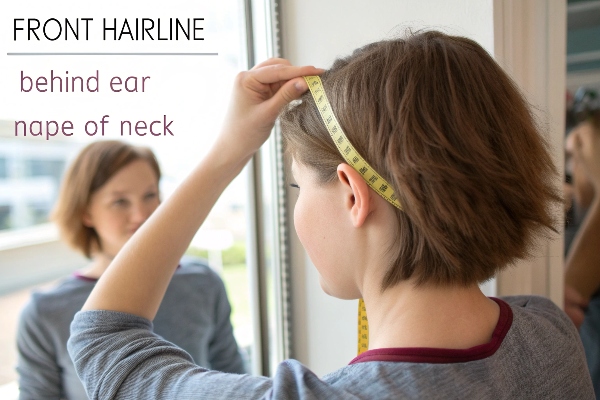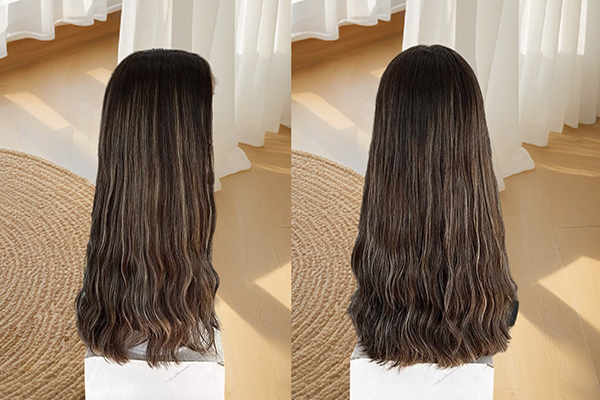When running a wig business or purchasing wigs for personal use, selecting the right hair density is crucial. You’ll encounter measurements such as 100%, 130%, and 150%, which indicate various wig densities. These percentages represent the fullness and thickness of the hair.
Wig hair density refers to the thickness or fullness of the hair on a wig. It describes the amount of hair strands present per square inch on the wig cap. The density can significantly affect the wig’s overall look, feel, and resilience.
Wig Density Chart

Low Density: 80% or Lower
Wigs with a density of 80% or lower are classified as light density. These wigs are ideal for beginners or those who prefer a lighter feel, as heavier wigs can be uncomfortable for some. Additionally, light density wigs are easier to maintain and provide enhanced breathability, particularly in summer.
Medium Density: 100-130%
Wigs with a density of 100-130% fall into the medium density category and are the most popular choice among women. Hair stylists frequently recommend these wigs becaeey are versatile and can be easily styled into various looks
High Density: 150%
If you’re seeking full, voluminous hair, wigs with a density of 150% may be your best option. These wigs offer significantly more thickness than standard options. Keep in mind that many wig companies allow you to select different hair densities, which may increase the price.
Extra High Density: 180-200%
For those who prefer even more volume, wigs with a density of 180-200% are available. These wigs feature exceptionally thick hair, far fuller than typical women’s natural hair. However, they may not be suitable for those seeking a more natural appearance.
What’ affect wigs density?
Wig density is influenced by several factors, including hair texture and the standards set by different wig manufacturers.
Hair texture plays a significant role, as straight, wavy, and curly hair can create different impressions of fullness. For instance, curly hair may appear denser than straight hair, even at the same density percentage.







